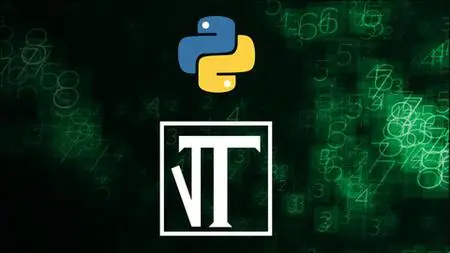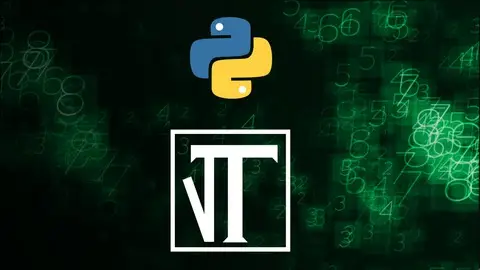Python For Calculus And Exact Sciences
Last updated 11/2020
MP4 | Video: h264, 1280x720 | Audio: AAC, 44.1 KHz
Language: English | Size: 1.92 GB | Duration: 4h 16m
Last updated 11/2020
MP4 | Video: h264, 1280x720 | Audio: AAC, 44.1 KHz
Language: English | Size: 1.92 GB | Duration: 4h 16m
Learn Python Fundamentals, Numpy and Sympy. Applied to mathematics, engineering, sciences.
What you'll learn
Watch the very first lesson of the course in other to see our content
Python native data structures
Repetitions loops and conditionals
Create functions and modules
Symbolic maht with Sympy
Matrices and vectors with Sympy
Solve linear and non-linear systems, differential equations with Sympy
Exercises solved in lessons
Numpy array data structures
Numpy array operations
Numpy applied to math (eigenvalues, eigenvectors, linear systems)
Requirements
The student don't need to know Python. But the familiarity with exact sciences is necessary.
Description
In this course, you will learn the Python fundamentals and Python applied to math and exact sciences.-Learn Python native data structures;-Learn repetitions loops and conditionals-Learn create functions and modules;-Work with symbolic maht;-Work with matrices and vectors;-Solve linear and non-linear systems, differential equations;-Exercises solved in lessons;-Learn Numpy array data structures;-Numpy array operations;-Numpy applied to math (eigenvalues, eigenvectors, linear systems);-Watch the very first lesson of the course in other to see our content.= = = = = = = = = = = = = = = = = = = = = = = = = = = = = = = = = = = = = = = = = = = = = = = = = = = = =
Overview
Section 1: Introduction
Lecture 1 0.1 - Course learning path
Lecture 2 0.2 Instalation
Lecture 3 0.3 Jupyter notebook IDE
Lecture 4 1.1 Breaf Introduction to Python
Lecture 5 1.2 Numbers
Lecture 6 1.3 String
Lecture 7 1.4 Lists
Lecture 8 1.5 Similarities between lists and strings
Lecture 9 1.6 Boolean Values
Lecture 10 2.1 If
Lecture 11 2.2 Loop for
Lecture 12 2.3 Loop while
Lecture 13 3.1 Methods to lists
Lecture 14 3.2 Tuples, sets and dictionaries
Lecture 15 3.3 Methods to dictionaries
Lecture 16 4.1 Functions
Lecture 17 4.2 Modules
Lecture 18 4.3 Creating a module
Section 2: Mathematics with Sympy
Lecture 19 5.2 Symbols
Lecture 20 5.3 Matrix
Lecture 21 5.4 Calculus functions
Lecture 22 5.5 Solvers
Lecture 23 5.6 Exercise 1
Lecture 24 5.7 Exercise 2
Lecture 25 5.8 Exercise 3
Lecture 26 5.9 Exercise 4
Lecture 27 5.10 Exercise 5
Lecture 28 5.11 Exercise 6
Section 3: Mathematics and data manipulation with Numpy
Lecture 29 6.1 Arrays
Lecture 30 6.2 Array operations
Lecture 31 6.3 Array creation functions
Lecture 32 6.4 Copy method
Lecture 33 6.5 Mathematical methods for arrays
Lecture 34 6.6 Indexing and slicing
Lecture 35 6.7 Operation with vectors and matrices in Numpy
Lecture 36 6.8 Eigenvalue and eigenvector
Lecture 37 6.9 Solver for linear systems
Section 4: Bonus Section (Download the JUPYTER NOTEBOOKS)
Lecture 38 Bonus Lecture (Download)
Engineers, physicists, mathematicians, chemists, students of exact sciences, economists, etc.



